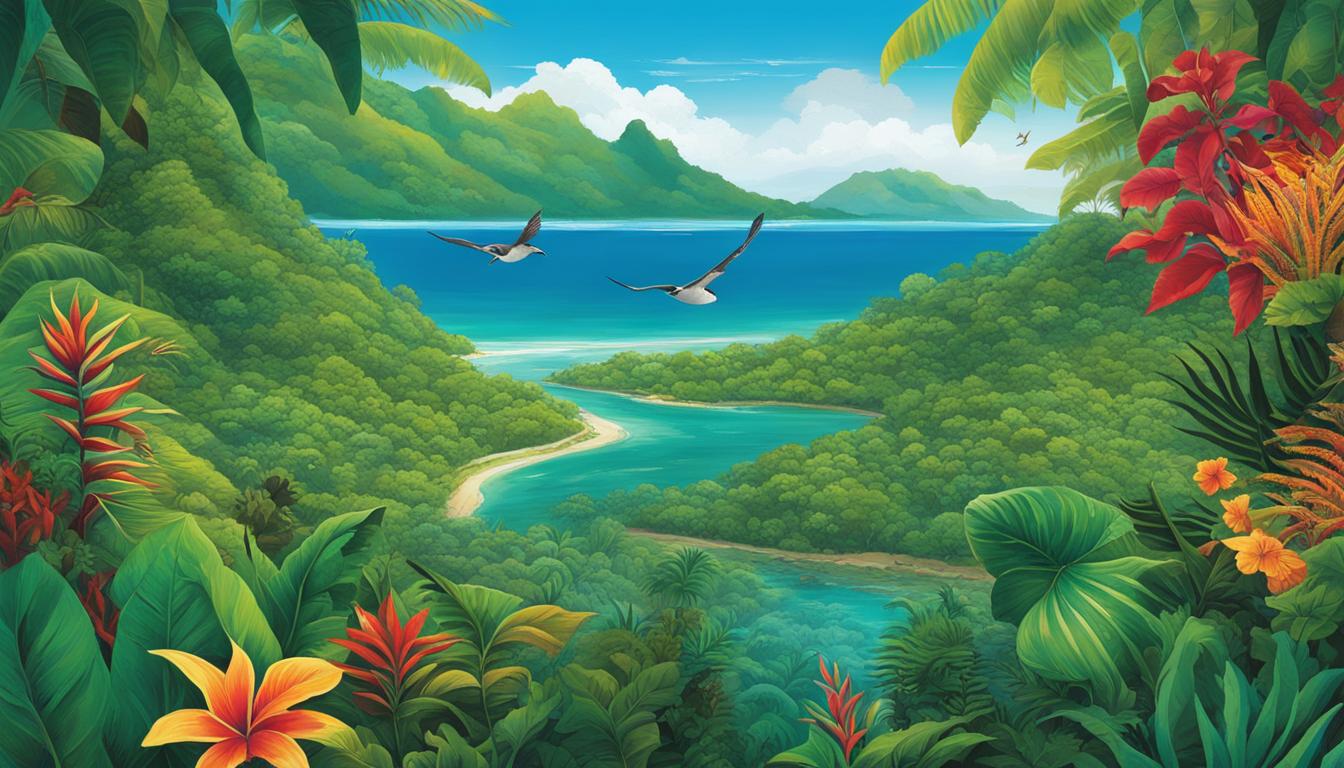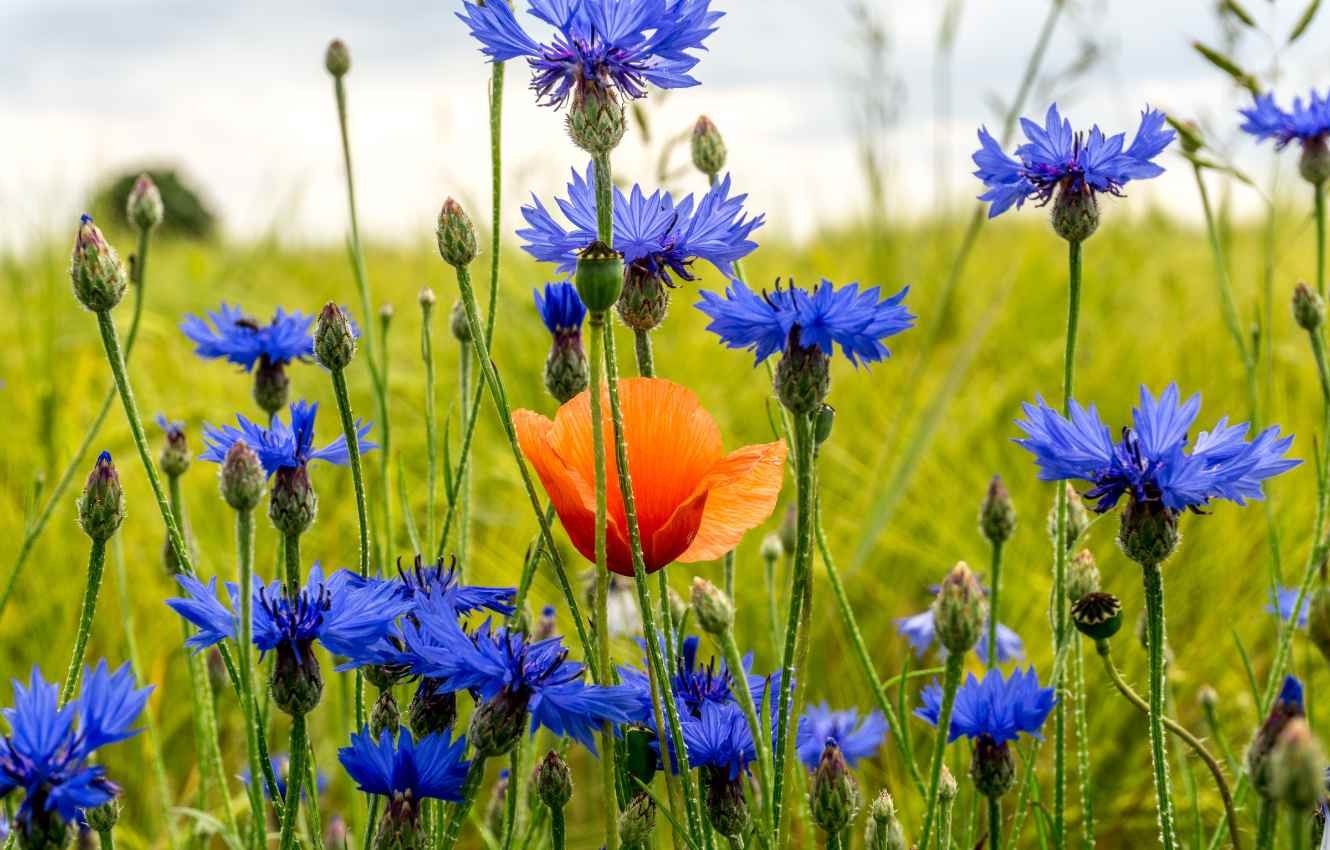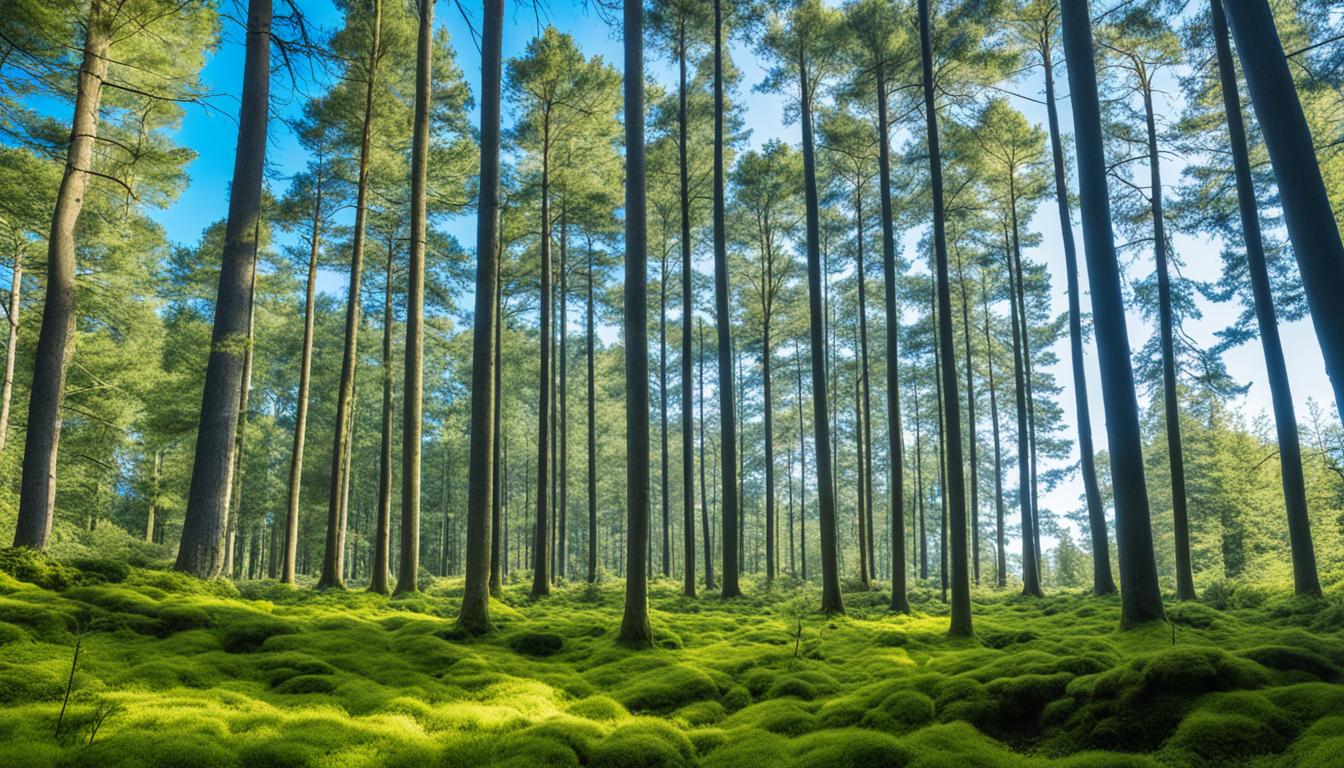Saint Vincent and the Grenadines Biodiversity: Animal and Plant Species and What Is Under Threat
Saint Vincent and the Grenadines, located in the Eastern Caribbean, is an archipelagic nation with a diverse range of ecosystems. The country is part of the Caribbean Islands Hotspot and boasts a rich biodiversity. Some key species recorded in Saint Vincent and the Grenadines include 17 mammal species, 190 bird species (including 2 island endemics), 21 reptile species (including 5 endemics), 4 amphibian species (including one endemic), 1,150 flowering plant species (with 16 endemics), over 500 marine species, and many more. The country is home to various species of economic value and provides important ecosystem services.
Key Takeaways
- Saint Vincent and the Grenadines possess a rich diversity of animal and plant species.
- The country is part of the Caribbean Islands Hotspot and supports various endemic species.
- Saint Vincent and the Grenadines face threats to their biodiversity from habitat loss, invasive species, and unsustainable practices.
- The country has implemented conservation efforts and established protected areas to safeguard its ecosystems.
- Saint Vincent and the Grenadines aim to balance biodiversity conservation with sustainable development.
Flora and Fauna of Saint Vincent and the Grenadines
Saint Vincent and the Grenadines boast an impressive diversity of flora and fauna. The country is home to over 1,150 species of flowering plants, including 16 endemics. Additionally, there are 163 species of ferns, with 4 of them being endemic to the region. The marine biodiversity is equally astounding, with over 500 species of finfish, including 12 species of whales and dolphins. The country is also home to 4 species of turtles, 9 species of gastropods, 11 species of seaweed, and 30 species of corals. Saint Vincent and the Grenadines are rightfully recognized as a biodiversity hotspot due to their remarkable species richness and endemism.
This image showcases the vibrant flora and diverse fauna that can be found in Saint Vincent and the Grenadines. From lush rainforests to vibrant coral reefs, the country’s ecosystems support a wide range of unique and beautiful species.
Threats to Biodiversity in Saint Vincent and the Grenadines
Despite its rich biodiversity, Saint Vincent and the Grenadines face various threats to their ecosystems. These threats include limited land use planning, deforestation, habitat loss and fragmentation, excessive use of agricultural chemicals, forest fires, sand mining, destructive harvesting practices, unsustainable use of resources, and the introduction of invasive alien species.
Natural threats such as volcanic eruptions, tropical cyclones, drought, and landslides also impact the forest ecosystems. Unsustainable coastal and marine resource use, overfishing, coastal habitat destruction, and pollution from land-based and boat sources further degrade the marine ecosystems. Climate change, particularly coral bleaching, poses additional risks to coral reefs.
These threats jeopardize the delicate balance of the ecosystems in Saint Vincent and the Grenadines, putting numerous species at risk of extinction and undermining the overall health and resilience of the environment.

Addressing these threats is crucial to the long-term preservation of biodiversity in the country. Efforts must be made to promote sustainable land use practices, halt deforestation, restore degraded habitats, and prevent the introduction and spread of invasive species. Additional measures should be taken to minimize the negative impacts of natural disasters and climate change on the forest and marine ecosystems.
By adopting proactive conservation strategies and raising awareness about the value and vulnerability of the local biodiversity, Saint Vincent and the Grenadines can safeguard their ecosystems for future generations.
Conservation Efforts in Saint Vincent and the Grenadines
Saint Vincent and the Grenadines have implemented various conservation efforts to protect their biodiversity. The country has established wildlife reserves, marine conservation areas, forest reserves, and marine parks to safeguard habitats and species. These protected areas cover a significant portion of the country’s marine, terrestrial, and freshwater habitats.
The National Biodiversity Strategy and Action Plan (NBSAP) guides the implementation of conservation measures and promotes sustainable development. The country also emphasizes the importance of preserving its natural heritage and supports wildlife conservation initiatives.

Conservation efforts in Saint Vincent and the Grenadines focus on creating protected areas to preserve the diverse ecosystems found in the country. These areas ensure that critical habitats and species are safeguarded from threats such as habitat loss and degradation.
“Protecting our natural heritage is essential for the sustainability of our ecosystems and the well-being of our communities.”
The establishment of wildlife reserves, marine conservation areas, forest reserves, and marine parks plays a vital role in biodiversity conservation. These protected areas provide safe havens for various animal and plant species, allowing them to thrive and maintain healthy populations.
The National Biodiversity Strategy and Action Plan (NBSAP) serves as a roadmap for conservation efforts in Saint Vincent and the Grenadines. This plan guides the implementation of strategies and actions to address the main threats to biodiversity and promote sustainable development.
| Conservation Efforts | Key Features |
|---|---|
| Wildlife Reserves | Protected areas designated for the conservation of specific animal species and their habitats. |
| Marine Conservation Areas | Protected areas focused on the preservation of marine ecosystems, including coral reefs, seagrass beds, and mangrove forests. |
| Forest Reserves | Protected areas established to safeguard the country’s diverse forests, including primary and secondary rainforests. |
| Marine Parks | Specially designated areas for the protection of marine biodiversity, allowing for sustainable use and conservation. |
The conservation efforts in Saint Vincent and the Grenadines demonstrate the country’s commitment to preserving its natural heritage and ensuring the sustainability of its ecosystems. Through the establishment of protected areas and the implementation of the NBSAP, the country is taking proactive measures to protect its biodiversity for future generations.
Forest Conservation in Saint Vincent and the Grenadines
Saint Vincent and the Grenadines boast approximately 29% of tropical forest cover, encompassing diverse ecosystems such as primary and secondary rainforests, palm brakes, elfin woodlands, littoral woodlands, dry scrub woodlands, and mangrove forests. However, the country has experienced a significant decline in forest cover due to deforestation, with an estimated 10% decrease between 1949 and 1993.
To address this pressing issue, Saint Vincent and the Grenadines have taken proactive measures, including reforestation and conservation forestry interventions in areas impacted by landslides and riverbank erosion. By implementing these forest conservation strategies, the country aims to restore and sustainably manage its forests, ensuring the protection of wildlife and the preservation of its natural heritage.

This image showcases the lush greenery and diverse flora found in the forests of Saint Vincent and the Grenadines, emphasizing the beauty and the importance of these ecosystems.
Marine Conservation in Saint Vincent and the Grenadines
Saint Vincent and the Grenadines boast diverse marine ecosystems that are home to a wide range of species. The country has taken significant steps to protect marine biodiversity through the establishment of marine conservation areas, marine parks, and marine reserves. These designated areas cover a substantial portion of the country’s marine habitats, playing a crucial role in conserving fish species, corals, marine mammals, and other marine organisms.

Efforts are underway to tackle various threats to the marine environment, including overfishing, coastal habitat destruction, pollution, and the impacts of climate change. By implementing conservation measures and raising awareness, Saint Vincent and the Grenadines aim to preserve the marine biodiversity that sustains their coastal communities and safeguards their natural heritage.
Sustainable Development and Biodiversity Conservation in Saint Vincent and the Grenadines
Saint Vincent and the Grenadines recognize the importance of balancing biodiversity conservation with sustainable development. The National Biodiversity Strategy and Action Plan (NBSAP) aims to integrate biodiversity conservation into national planning processes and promote the sustainable use of biological resources. The country is implementing measures to encourage integrated natural resource management, rationalize land use allocation, strengthen conservation at national and local levels, and enhance the capacity for sustainable biodiversity use. By prioritizing sustainable development practices, Saint Vincent and the Grenadines strive to protect their natural heritage while supporting the well-being of their communities.
Threats to Forest and Marine Biodiversity in Saint Vincent and the Grenadines
Forest and marine biodiversity in Saint Vincent and the Grenadines are facing numerous threats that endanger their long-term conservation.
Forests are at risk due to several factors:
- Limited land use planning
- Deforestation
- Habitat loss and fragmentation
- Forest fires
- Unsustainable resource use
Marine ecosystems in Saint Vincent and the Grenadines also face significant challenges:
- Overfishing
- Coastal habitat destruction
- Pollution from land-based and boat sources
- Coral bleaching caused by climate change
In addition to these threats, invasive alien species pose a significant risk to both forest and marine biodiversity.
Efforts to address and mitigate these threats must continue to ensure the long-term conservation of biodiversity in the country.
Implementation of the National Biodiversity Strategy and Action Plan
Saint Vincent and the Grenadines have developed a National Biodiversity Strategy and Action Plan (NBSAP) to guide the implementation of the Convention on Biological Diversity. The NBSAP focuses on addressing the main threats to biodiversity and identifies priority areas for action. The plan aims to develop a national biodiversity policy, integrate biodiversity conservation into national planning processes, encourage natural resource management, rationalize land use allocation, strengthen conservation efforts, and enhance capacity for sustainable biodiversity use. Ongoing efforts are being made to revise and update the NBSAP to ensure its alignment with national development goals.

Implementing the National Biodiversity Strategy and Action Plan is crucial in safeguarding the diverse ecosystems and species found in Saint Vincent and the Grenadines. By developing a national biodiversity policy, the country can prioritize conservation efforts and ensure sustainable development that preserves its natural heritage.
Aichi Biodiversity Targets and Actions in Saint Vincent and the Grenadines
Saint Vincent and the Grenadines are dedicated to achieving the Aichi Biodiversity Targets to preserve their wildlife and natural resources. The country has implemented various actions to safeguard its biodiversity and promote sustainable development. Some of these actions include:
- Enhancing the representation of biodiversity in protected areas
- Improving the management of forest plantations
- Protecting and managing endangered species
- Conserving important genetic diversity for agriculture
- Reducing unsustainable consumption of biological resources
- Promoting sustainable livelihoods
- Developing value-added products
- Implementing strategic environmental assessments and environmental impact assessments
- Enhancing financial resources and capacity to support biodiversity conservation
These actions align with Saint Vincent and the Grenadines’ commitment to sustainable development and the preservation of their wildlife and natural resources.

Conclusion
In conclusion, Saint Vincent and the Grenadines is a remarkable country with a diverse range of animal and plant species. However, this rich biodiversity is facing significant threats such as habitat loss, invasive species, unsustainable resource use, and climate change.
Luckily, the country has taken proactive steps to protect its ecosystems and promote sustainable development. The National Biodiversity Strategy and Action Plan serve as a guidebook, integrating biodiversity conservation into national planning processes and strengthening the capacity for sustainable biodiversity use.
By addressing these threats and implementing targeted actions, Saint Vincent and the Grenadines are committed to preserving their ecological diversity and ensuring the long-term viability of their natural heritage. This dedication to conservation not only protects the unique flora and fauna of the country but also contributes to the well-being of the local communities and the sustainability of their resources.
FAQ
What is the biodiversity like in Saint Vincent and the Grenadines?
Saint Vincent and the Grenadines is known for its rich biodiversity, with a diverse range of animal and plant species. The country is part of the Caribbean Islands Hotspot and boasts a high species richness and endemism.
What are some threats to biodiversity in Saint Vincent and the Grenadines?
The country faces various threats to its ecosystems, including habitat loss and fragmentation, deforestation, unsustainable resource use, invasive alien species, and natural threats such as volcanic eruptions and climate change impacts.
What conservation efforts are in place to protect biodiversity in Saint Vincent and the Grenadines?
Saint Vincent and the Grenadines have established protected areas such as wildlife reserves, marine conservation areas, forest reserves, and marine parks. The country is also implementing the National Biodiversity Strategy and Action Plan (NBSAP) to guide conservation measures and promote sustainable development.
How is forest conservation being addressed in Saint Vincent and the Grenadines?
The country is implementing measures such as reforestation and conservation forestry interventions to address deforestation and protect forest ecosystems. Forest reserves and conservation efforts are crucial for wildlife conservation and the preservation of natural heritage.
What is being done to conserve marine biodiversity in Saint Vincent and the Grenadines?
Saint Vincent and the Grenadines have established marine conservation areas, marine parks, and marine reserves to protect marine habitats and species. Efforts are also being made to address threats such as overfishing, coastal habitat destruction, pollution, and climate change impacts.
How does Saint Vincent and the Grenadines balance biodiversity conservation with sustainable development?
The country aims to integrate biodiversity conservation into national planning processes and promote sustainable use of biological resources. The National Biodiversity Strategy and Action Plan (NBSAP) guides these efforts, emphasizing the importance of sustainable development practices to protect natural heritage and support community well-being.
What are the main threats to forest and marine biodiversity in Saint Vincent and the Grenadines?
Forests are at risk due to deforestation, limited land use planning, habitat loss, and unsustainable resource use. Marine ecosystems face threats such as overfishing, coastal habitat destruction, pollution, and climate change impacts.
How is the National Biodiversity Strategy and Action Plan (NBSAP) being implemented in Saint Vincent and the Grenadines?
The NBSAP guides the implementation of the Convention on Biological Diversity and focuses on integrating biodiversity conservation into national planning processes. It promotes natural resource management, rational land use allocation, conservation efforts, and capacity building for sustainable biodiversity use.
What actions are being taken in Saint Vincent and the Grenadines to achieve the Aichi Biodiversity Targets?
The country is enhancing biodiversity representation in protected areas, improving forest plantation management, protecting endangered species, conserving genetic diversity important to agriculture, reducing unsustainable consumption of biological resources, promoting sustainable livelihoods, and developing value-added products.








